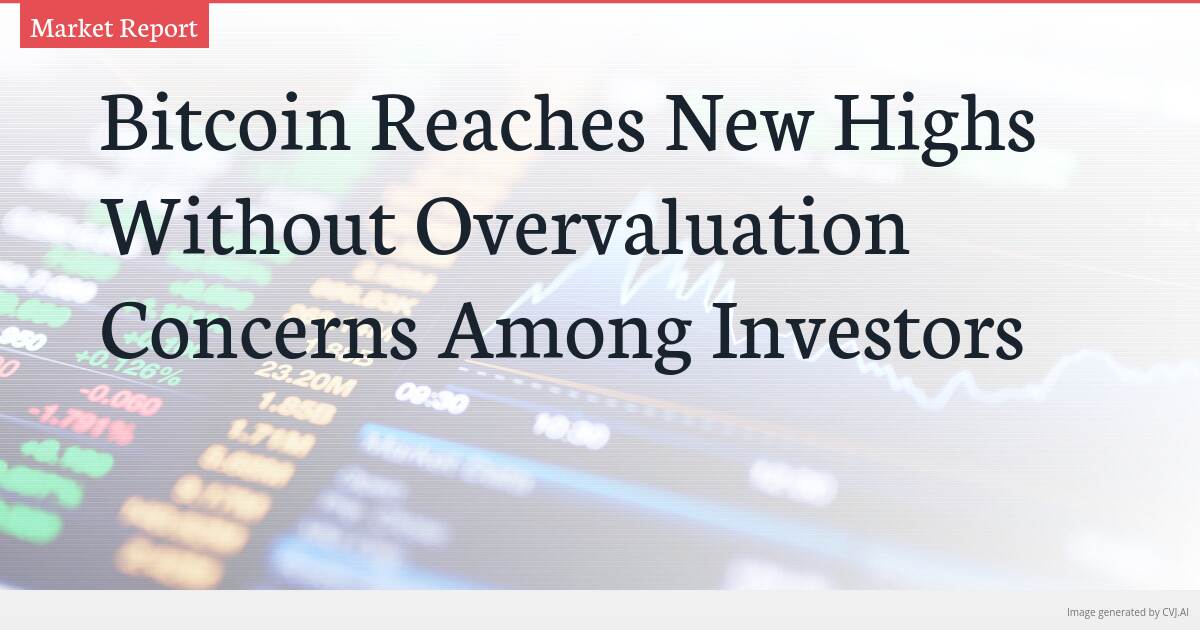This summary text is fully AI-generated and may therefore contain errors or be incomplete.
Bitcoin has recently reached new all-time highs, trading at around $77,310, which represents a 13.52% increase over the past week. This surge has ignited discussions among investors and analysts regarding the asset’s valuation and its divergence from traditional stock market behavior.
Valuation and Market Behavior
The increase in Bitcoin’s price does not raise the same overvaluation concerns typically associated with stocks. Unlike equities, where rising prices often lead to scrutiny over a company’s financial performance and valuation multiples, Bitcoin is viewed as a distinct asset class. As its price rises, investors tend to interpret this as a sign of greater potential success, which could further enhance its value.
During the recent trading week surrounding the U.S. presidential election, there were significant inflows into U.S. spot Bitcoin ETFs, amounting to approximately $1.63 billion. This influx reflects a growing confidence in Bitcoin as an investment vehicle, with many investors remaining undeterred by its current price levels.
Investor Sentiment
A notable pro-Bitcoin author announced plans to purchase an additional 27 Bitcoins, regardless of price fluctuations, highlighting a bullish sentiment among long-term holders. This commitment to accumulating Bitcoin, even at high prices, underscores a broader belief in the asset’s future potential.
The prevailing sentiment among Bitcoin enthusiasts is one of optimism, with many asserting that the asset remains in its early stages despite its substantial price appreciation. Observations indicate that Bitcoin is still regarded as an emerging asset class, suggesting that its growth trajectory is far from complete.
Market Dynamics
Analysts have pointed out that recent price movements do not indicate an overheated market. It has been stated that the market does not appear to be overheating from a fundamental perspective, reinforcing the idea that Bitcoin’s rally is supported by solid underlying factors.
The mechanics of Bitcoin’s supply dynamics further distinguish it from traditional equities. Unlike companies that can dilute their equity by raising capital through At-the-Market (ATM) offerings, Bitcoin’s supply is capped, and the only way to increase its value is through price appreciation.
Institutional Interest
This unique characteristic has led to a perception that rising prices are sustainable, as no additional supply can be introduced without a corresponding increase in demand. Observations from a crypto analysis firm indicate that Bitcoin’s recent price surge, accompanied by heavy trading volume, signals ongoing positive momentum in the market.
As Bitcoin continues to set records, the implications for the broader financial landscape are significant. The asset’s performance is attracting attention from institutional investors and traditional financial institutions, which are increasingly recognizing the potential of cryptocurrencies as a legitimate asset class.
Future Implications
The recent bullish trends in Bitcoin have prompted discussions about its role in diversifying investment portfolios and hedging against inflation, particularly amid ongoing economic uncertainties. Moreover, the enthusiasm surrounding Bitcoin extends beyond retail investors.
Institutional players are also making substantial moves in the market, as evidenced by the significant inflows into Bitcoin ETFs. This trend suggests a growing acceptance of Bitcoin among traditional investors, who are beginning to view it as a viable alternative to conventional assets.
Conclusion
The convergence of traditional finance and the cryptocurrency market could lead to a more integrated financial ecosystem, where Bitcoin plays a pivotal role in shaping investment strategies. In summary, Bitcoin’s recent rally has not only set new price records but has also sparked a broader conversation about its valuation and future potential.
With a unique supply dynamic and a growing base of institutional support, Bitcoin is poised to continue its upward trajectory, challenging traditional notions of asset valuation and investment. As the market evolves, the implications for both investors and the financial system at large will be profound, marking a new chapter in the ongoing narrative of cryptocurrency adoption.
📎 Read the original article on cointelegraph.com


